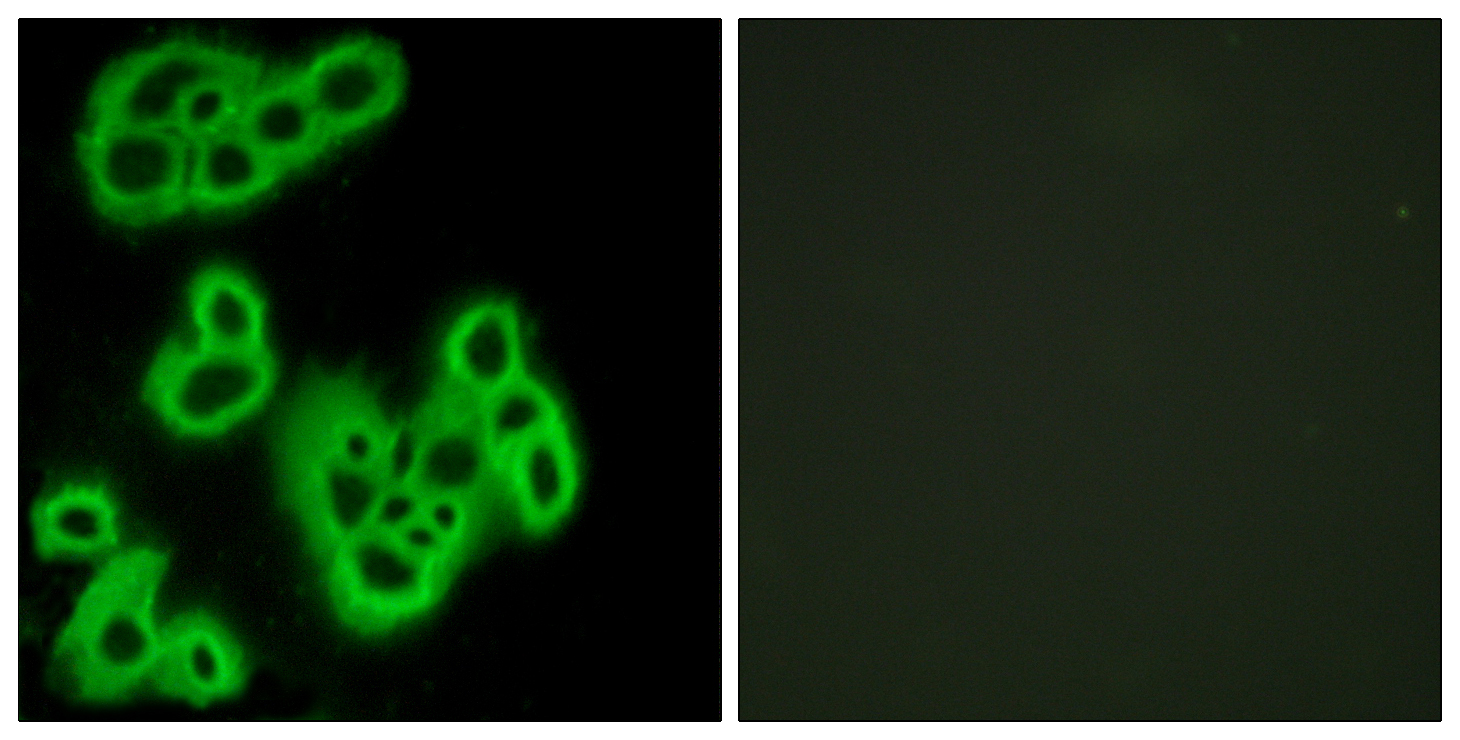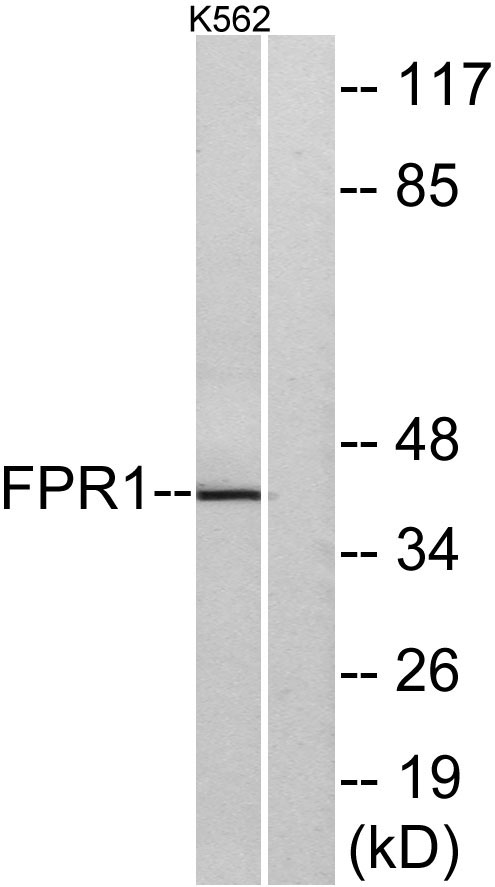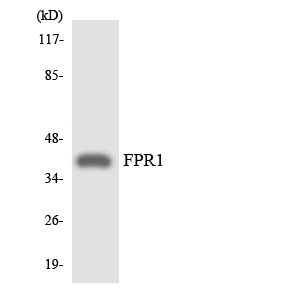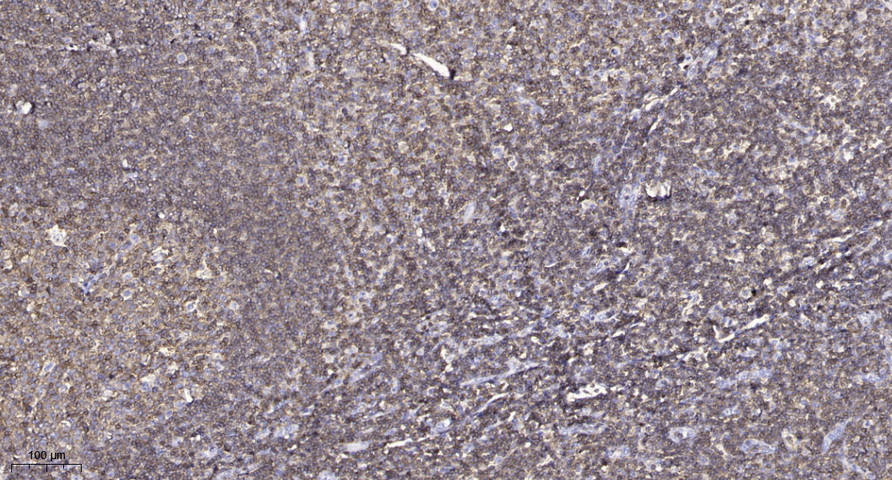FPR1 Polyclonal Antibody
- Catalog No.:YT1768
- Applications:WB;IHC;IF;ELISA
- Reactivity:Human;Rat;Mouse;
- Target:
- FPR1
- Fields:
- >>Rap1 signaling pathway;>>Neuroactive ligand-receptor interaction;>>Neutrophil extracellular trap formation;>>Staphylococcus aureus infection
- Gene Name:
- FPR1
- Protein Name:
- fMet-Leu-Phe receptor
- Human Gene Id:
- 2357
- Human Swiss Prot No:
- P21462
- Mouse Swiss Prot No:
- P33766
- Immunogen:
- The antiserum was produced against synthesized peptide derived from human FPR1. AA range:155-204
- Specificity:
- FPR1 Polyclonal Antibody detects endogenous levels of FPR1 protein.
- Formulation:
- Liquid in PBS containing 50% glycerol, 0.5% BSA and 0.02% sodium azide.
- Source:
- Polyclonal, Rabbit,IgG
- Dilution:
- WB 1:500 - 1:2000. IHC 1:100 - 1:300. IF 1:200 - 1:1000. ELISA: 1:5000. Not yet tested in other applications.
- Purification:
- The antibody was affinity-purified from rabbit antiserum by affinity-chromatography using epitope-specific immunogen.
- Concentration:
- 1 mg/ml
- Storage Stability:
- -15°C to -25°C/1 year(Do not lower than -25°C)
- Other Name:
- FPR1;fMet-Leu-Phe receptor;fMLP receptor;N-formyl peptide receptor;FPR;N-formylpeptide chemoattractant receptor
- Observed Band(KD):
- 40kD
- Background:
- formyl peptide receptor 1(FPR1) Homo sapiens This gene encodes a G protein-coupled receptor of mammalian phagocytic cells that is a member of the G-protein coupled receptor 1 family. The protein mediates the response of phagocytic cells to invasion of the host by microorganisms and is important in host defense and inflammation.[provided by RefSeq, Jul 2010],
- Function:
- function:High affinity receptor for N-formyl-methionyl peptides, which are powerful neutrophils chemotactic factors. Binding of FMLP to the receptor causes activation of neutrophils. This response is mediated via a G-protein that activates a phosphatidylinositol-calcium second messenger system.,PTM:Phosphorylated; which is necessary for desensitization.,similarity:Belongs to the G-protein coupled receptor 1 family.,tissue specificity:Neutrophils.,
- Subcellular Location:
- Cell membrane ; Multi-pass membrane protein . Internalizes in presence of its ligands, fMLP, TAFA4 and CTSG. .
- Expression:
- Neutrophils.
- June 19-2018
- WESTERN IMMUNOBLOTTING PROTOCOL
- June 19-2018
- IMMUNOHISTOCHEMISTRY-PARAFFIN PROTOCOL
- June 19-2018
- IMMUNOFLUORESCENCE PROTOCOL
- September 08-2020
- FLOW-CYTOMEYRT-PROTOCOL
- May 20-2022
- Cell-Based ELISA│解您多样本WB检测之困扰
- July 13-2018
- CELL-BASED-ELISA-PROTOCOL-FOR-ACETYL-PROTEIN
- July 13-2018
- CELL-BASED-ELISA-PROTOCOL-FOR-PHOSPHO-PROTEIN
- July 13-2018
- Antibody-FAQs
- Products Images

- Immunofluorescence analysis of MCF7 cells, using FPR1 Antibody. The picture on the right is blocked with the synthesized peptide.

- Western blot analysis of lysates from K562 cells, using FPR1 Antibody. The lane on the right is blocked with the synthesized peptide.

- Western blot analysis of the lysates from COLO205 cells using FPR1 antibody.

- Immunohistochemical analysis of paraffin-embedded human tonsil. 1, Antibody was diluted at 1:200(4° overnight). 2, Tris-EDTA,pH9.0 was used for antigen retrieval. 3,Secondary antibody was diluted at 1:200(room temperature, 45min).



